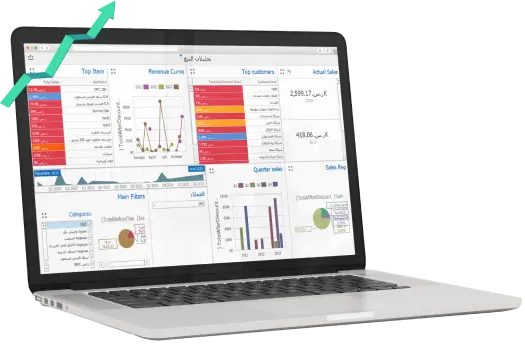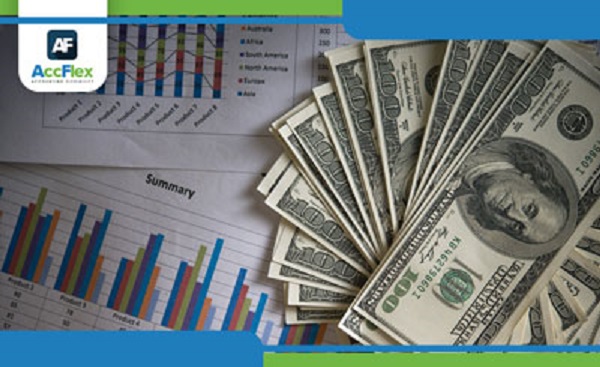Stockholders' Equity) Owner’s Equity)
The Accounting Equation is: Assets = (Liabilities + Owner’s Equity)
Thus, stockholders' equity or equity is listed on the balance sheet as a line item or statement of financial position as well as that there are among financial statements are a statement called the statement of changes in equity and its purpose is to see the factors of change in owner's equity during the accounting period, whether it is increased or decreased
Statement of Changes in Equity consists of a set of line items, these line items can be entirely in the company or some of them, but there are such basic line items such as:
Paid-up capital - Increase in Paid-in Capital
Reserves of all types (reserve requirement, general reserve, and any other reserves allotted by the company)
- Profit for the period
- Retained Earnings
- Treasury Stock: is a portion of previously issued, outstanding shares of stock which a company has repurchased or bought back from shareholders
- Revaluation surplus on investments available for sale & surplus on revaluation of fixed assets
First, Capital
The company's capital is the sum of the cash shares and shares in-kind that partners provide when establishing a company and company capital is considered to be a guarantee to corporate creditors and therefore cannot be affected over the organizational life cycle, therefore the partners refrain to refund their share capital while the company startups, but they can sell shares or refund the value of a share during the liquidation, only after the remaining dues were paid to creditors and the company's capital can be changed either by increase and reduction, but according to certain procedures stipulated the companies law and capital is a credit because it is a liability on the legal personality toward the capital owners of shareholders and owners because the legal entity of the company is separate from the owners of capital, it is also a liability because
In the event of a liquidation of the company, each partner may take its funds that he paid upon incorporation, after the company liquidation and payment of creditors' dues. Likewise, when a partner withdraws from the company, the company is considered to be liable to pay the funds paid by the partner
Joint-Stock Companies
Joint-stock companies are companies whose capital is divided into shares of equal value, and the characteristics of joint-stock companies are:
1- Legal Personality
The joint-stock company is a legal entity separate from its shareholders, and this includes the separation of the joint-stock company from the affairs of its owners (it sells and buys by itself), is not affected by the transfer of ownership of its shares from person to person and is responsible for its debts.
2- Company Management:
The joint-stock companies' management system is through the general meeting of shareholders (ordinary or extraordinary), and the direct management of the company's business is done by a board of directors elected by shareholders from among the company's shareholders and one of the members of the board of directors manages daily operations named (managing director) and general manager of the company, the board of directors may appoint a general manager who is not members of the board of directors but not shareholders of the company.
The General Meeting of Shareholders is the company's highest decision-making body within a JSC, then the board of directors, and then the managing director.
3- Ease of Sharing Shares:
The capital of a joint stock company is divided into shares of equal value called shares and these shares may be one class or more than one class (preferred and common stock). The shareholders have the right to trade the shares of the company without the need to take the approval of the company or its partners. The ease of trading results in, among other things, the continuation and non-impact of the company's failure or death of its shareholders. The instrument of a company can be a short- or long-term investment tool as desired.
Characteristics of a Joint Stock Company
The number of founders of a joint-stock company should not be less than three if the number of partners is less than 2, the company is considered dissolved by law if it does not initiate within 6 months to complete the quorum or the rest of the partners are required during this period to convert them to an one-person company and for the partnership limited by shares cannot be less than two partners, one of them general partner
It is not permissible to issue preferred shares or increase the capital of preferred shares except after the approval of the extraordinary general meeting with a majority of three quarters of the company's shares before the increase, based on the proposal of the board of directors and the auditor's report regarding the reasons justifying that
The extraordinary general meeting is responsible for changing the company’s system, taking into account the consequent increase shareholders’ liabilities. The extraordinary general meeting considers in particular the following changes
1- The authorized share capital of the company may be increased or reduced
2- Approval to increase capital of preferred shares
The company's board directors decision may increase its capital within the limits of the authorized share capital excluding listed companies on the Egyptian stock exchange, the increase of the capital would be decided by the company's ordinary general meeting, the approval of the extraordinary general meeting is not required to change the articles of association of the company in the event that the company's board of directors increases the capital within the limits of the authorized share capital
Joint Stock Company Formation
The founders submit an application to the Ministry of Commerce to establish a joint stock company and the incorporation application indicating
1- How to subscribe to the company's capital.
2- The number of shares in which subscribed by the founders and the maximum number of shares for each one of them, a copy of the company's contract and articles of incorporation shall be attached to the application, and a certificate of the commercial registry authority stating that the company’s trade name is not confused with the name of other companies.
And the competent authorities approval if the practice of any of the company's objectives requires obtaining the special approvals under the provisions of the laws in force in each country
The founders may subscribe to all the capital of the company if it is publicly held. They may subscribe in part and offer the rest for public subscription. And if the capital is offered for public subscription, the invitation to subscription is published in a daily newspaper distributed in the corporate headquarters, and the activity is not practiced until after issuing a bank letter of deposit of 25% of the authorized capital, and the information about the company shall be clarified in the prospectus:
The names, place of residence, and nationality of the founders
The paid-up capital, the type, value, and number of shares, the amount offered for public subscription, what the founders have subscribed, and the restrictions imposed on stock trading.
The name of the company, its purpose, and its headquarters
Methods of Paying Dividends
The subscription start date/ end date, place, and conditions
An estimated statement for the costs of establishing a company, called incorporation expenses. These expenses are that the founders incurs before it begins active business, such as advertisements, publications, and the company contract writing expenses.
After the subscription is completed, the constituent assembly held with the aim of check subscription of all the capital and then meeting the minimum amount, then final texts of the companies' system, and the members of the board of directors and the first auditor are appointed, and the founders’ report on the business and expenditures required to establish the company is discussed. After that, the company is registered in the register of companies in the Commercial Companies Magazine at the Ministry of Commerce and is also registered in the register
Incorporation Expenses
They are amounts incurred to end the procedures for establishing companies and include the expenses of a feasibility study of establishing the company and the fees of people who provide the company’s services and otherwise, and the accounting treatment of the line item of incorporation expenses is considered as expenses that are allocated to the same period in which they occurred, and these expenses are not divided into different fiscal periods because it is not possible to determine when to use it in the future:
|
Account |
Debit |
Credit |
|
Incorporation Expenses |
XXX |
|
|
Bank |
|
XXX |
Types of Capital
Authorized Share Capital: is the capital in the commercial register, which is the maximum limit or number that the company can issue with the value of shares, and it is not permissible to issue new shares higher than the value of the authorized share capital except after the approval of the general meeting of the company and approvals from the necessary authorities and when there is changing or an increase in the authorized share capital, this shall be clarified in the commercial register of the company.
Issued Capital: is the value of the shares that have been issued, and the issued capital is often less than the authorized share capital and may be similar in value, but it cannot exceed it, assuming that the authorized share capital is 50 million and therefore the company cannot offer shares of more than 50 one million means that it is possible to offer shares of 30 or 40 million for the shareholders or subscribers to buy them. The basic idea is that the issued capital cannot exceed the authorized share capital.
Paid-Up Capital: is the value of the amounts collected from the issued and subscribed capital from the shareholders, either in one payment or in installments, which appears in the statement of changes in equity
In the sense that the company offered shares worth, for example, 30 million (issued capital) what was sold or collected of the number of shares is the paid-up capital, which appears in the statement of changes in equity
Additional Paid-In Capital: this is when the company issues shares higher than the nominal value of the share which was previously issued in the sense that the company was started, for example, one million shares were offered at a nominal value of 5 pounds per share, and after a period the company decided that it would offer new shares, for example, with a nominal value of 7 pounds per share, in our case an increase of 2 pounds in the value of the share
Additional Paid-In Capital = 2 * 1,000,000 = 2,000,000
Share Premium is a right for joint-stock companies when issuing new shares because the nominal value of the shares alone does not reflect the current real value of the share after years of work and achieving profits. Therefore, it is natural for companies to take the share premium new shares in exchange for the shareholder obtaining these shares so that there is fairness between current shareholders and new shareholders
The value of the share premium is added to the reserve requirement of the company until it reaches half the value of the issued capital, and what is more than that of the bonus amount, a special reserve is allotted from it based on the decisions of the general meeting or any proposal decided by the board of directors that is investigated for the company, provided that this does not include paying as dividend and share premium (additional paid-in capital) to be closed in the reserve requirement
|
Account |
Debit |
Credit |
|
Share Premium |
XXX |
|
|
Reserve |
|
XXX |
Example:
A company whose capital has been authorized is twenty million, and the issued and paid-up capital is 15 million with 3 million shares, the nominal value of the share is 5 pounds
First, the paid-up and issued capital is 15 million
|
Account |
Debit |
Credit |
|
Bank |
15,000,000 |
|
|
Common Stock |
|
15,000,000 |
After several years, one million shares were offered in the market at a value of 6 pounds, the value of the share premium (5-6)
|
Account |
Debit |
Credit |
|
Bank |
6000000 |
|
|
Paid-Up Capital 1000000*5)) |
|
5000000 |
|
Additional Paid-In Capital 1000000*1)) |
1,000,000 |
A statement is created of the issued and paid-up capital, and in most cases, the issued capital with shares is the capital paid out by the shareholders, and the number of issued shares and the value of the share is shown when the company decides to increase the capital issued and paid it is holding a general meeting to approve the capital increase, the issued and paid-up and will be shown in the value of the statement that the increase has on the issued and paid-up capital and the number of shares increased
Increase in Paid-in Capital
When the company decides that it increases the issued or paid-up capital from its current value, let say 20 million to 40 million, and received only part of the amount, let say one million pounds, this is what is increase in paid-in capital and appears in the statement of changes in equity as a separate line item and when the rest of the amount is collected and changed the capital number in the commercial register is transferred to the paid-up capital
Founder Shares
Founder shares are created in exchange for waiving a liability granted by the government or any legal person, and the company’s system must include a statement in exchange for these shares and rights, and the general meeting of the company has the right to cancel them in exchange for a fair compensation, after a period of ten years has passed from the date of establishing those shares, unless the company’s system stipulates for a longer period of time, one of the most important rights granted to the owners of these shares is the right to obtain a share of the profits, whether in the form of fixed amounts or a percentage of the profits, including no more than 10% of the net profits after allotted the reserve requirement, and the owners of these shares will not have any share in the surplus of liquidation during the liquidation of the company.









